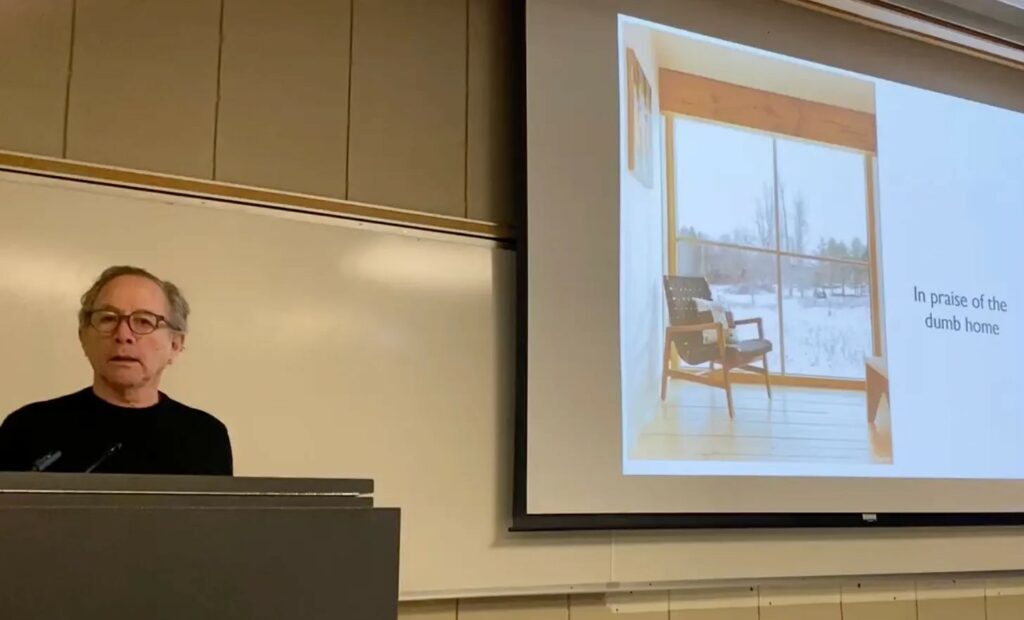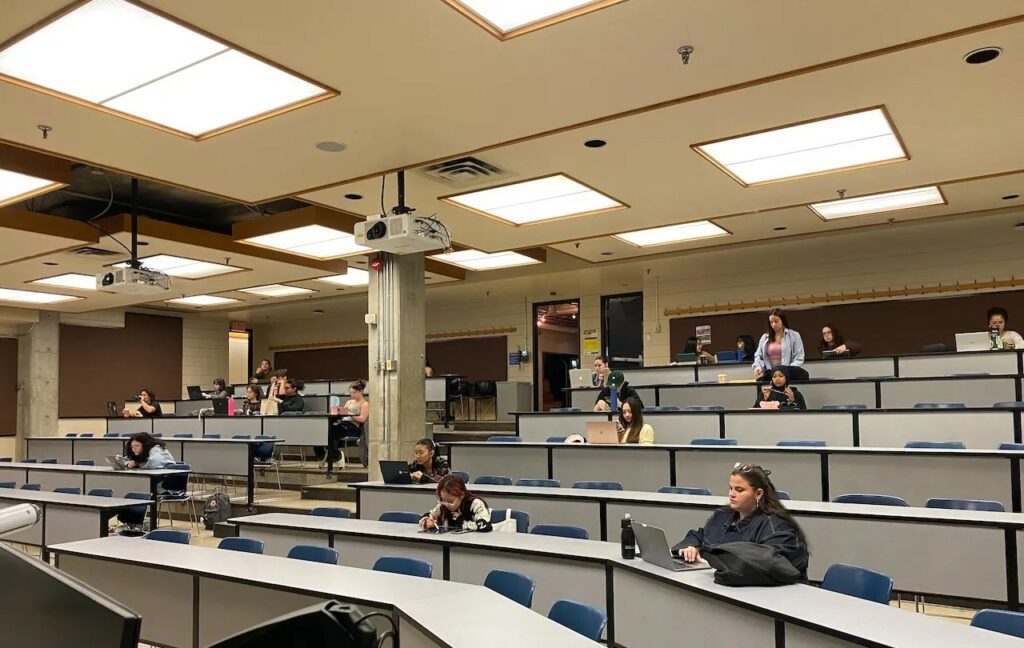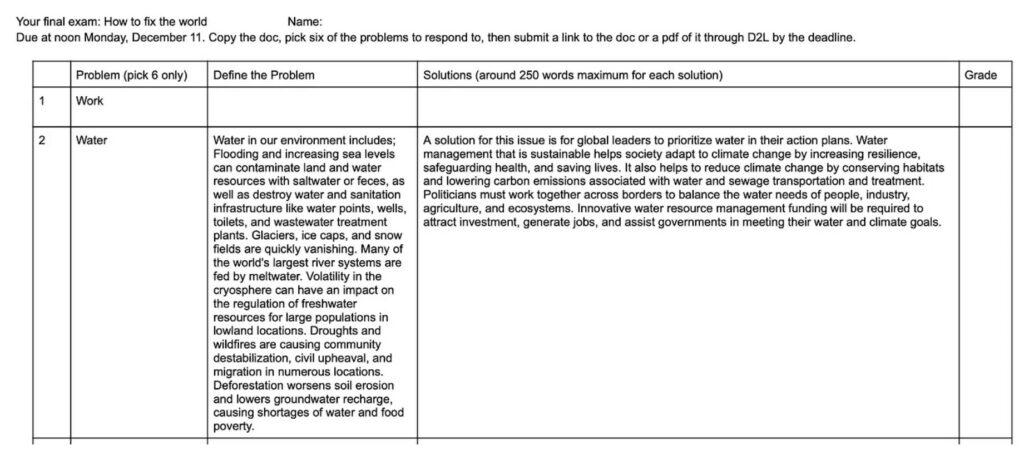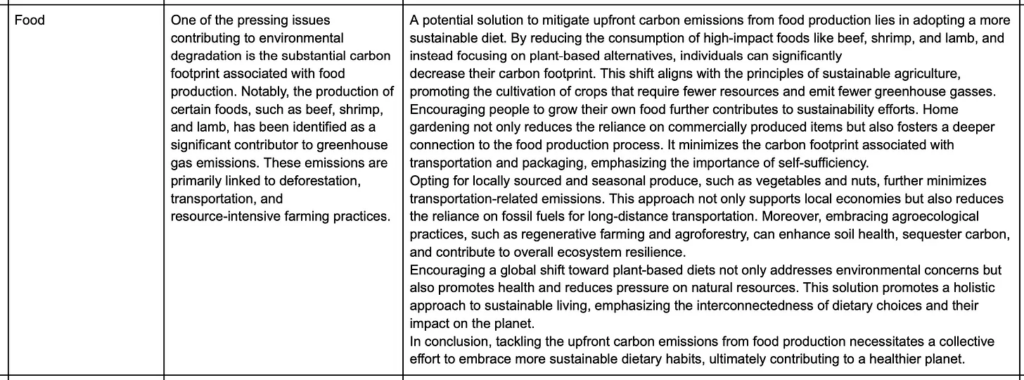My TMU Sustainable Design students on how to fix the world, Carbon Upfront, Lloyd Alter. For about a dozen years, I have taught a one-term course on Sustainable Design at Toronto Metropolitan University (TMU, formerly Ryerson University). It started in the School of Interior Design but has expanded to include students of photography, urban design, fashion, and journalism from the Creative School. Teaching sustainable design is tough; it is constantly changing. Who was teaching about embodied carbon a dozen years ago? It’s not like teaching Latin; Every year, you have to keep current and start over. Then there is the format. Having an old white guy standing in front of a class lecturing is so tired. The only things that have changed since
Topics:
Angry Bear considers the following as important: climate change, Hot Topics
This could be interesting, too:
NewDealdemocrat writes JOLTS revisions from Yesterday’s Report
Joel Eissenberg writes No Invading Allies Act
Joel Eissenberg writes How Tesla makes money
NewDealdemocrat writes January JOLTS report: monthly increases, but significant downward revisions to 2024
My TMU Sustainable Design students on how to fix the world, Carbon Upfront, Lloyd Alter.
For about a dozen years, I have taught a one-term course on Sustainable Design at Toronto Metropolitan University (TMU, formerly Ryerson University). It started in the School of Interior Design but has expanded to include students of photography, urban design, fashion, and journalism from the Creative School. Teaching sustainable design is tough; it is constantly changing. Who was teaching about embodied carbon a dozen years ago? It’s not like teaching Latin; Every year, you have to keep current and start over.
Then there is the format. Having an old white guy standing in front of a class lecturing is so tired. The only things that have changed since 1233 in Bologna are that now I have PowerPoint, and the students have phones. During the pandemic, I taught by Zoom and looked forward to being in the classroom again, but about half of the students don’t show up, and half of the ones that do have their noses in their computers. With only ten lectures, I barely get to know them.
Then, there is the idea of teaching sustainable design to third and fourth-year students in a one-term optional course. It should be mandatory in the first year. I have had students tell me they would have done different work had they learned about it earlier.
Then there is the lecture hall; the class is very popular, and there isn’t a big enough classroom in the School of Interior Design, so I am shuffled all over campus. At least this year, I was in the School of Architecture, but the lecture hall doesn’t meet standards for air changes, and my little CO2 meter often pushes 1400 PPM. I tested for Covid every week.
Then there is the grading. I have 136 students and do not have a teaching assistant, so I have to do everything myself. It took a week of 10-hour days to get through the final exam, and I couldn’t see straight by the end of it.
So why do I do this? It’s not for the money; I suspect I would earn more per hour flipping burgers. It’s not for the camaraderie; I have barely met other staff because I am never in the school itself. It’s not for academic glory; I used to have “Adjunct Professor” on my email signature line and was informed that this was wrong; I am a mere “Contract Lecturer.”
Ultimately, it is for the satisfaction I get from many of my students’ work, particularly in the final exam. It becomes clear that they have been listening and learning, and many tell me they have been inspired. A few have said it changed the direction of their lives and switched courses to the sustainability sector.
And sometimes, I feel that I am learning as much from them as they are from me.
Take this year’s exam, which I titled “How to Fix the World-” if there is one thing I am trying to get across, it is that while our problems are dire, there are solutions. If they are going to be designers, they must be at the forefront, understanding the issues and selling the solutions.
I have a short attention span and die if I have to read a long paper, so I broke the exam into small bits. I gave the students 16 topics running the gamut from work, water, fashion, food, and education. I asked them to define the problem (a narrow column because I only expected a few words) and propose a solution for any six of the 16.
The answers were interesting, intelligent and often better than I could have written. Here’s an example of the different kinds of answers I got for the problem of food, like this basic summary of the solution (less meat, grow your own, local and seasonal).
Others like Zooey gave me lists.
More of these answers on Llyod’s site.
The least answered and probably toughest category is equity, how people in rich countries are emitting so much carbon, and the poor are suffering the consequences. This is an issue one could spend a whole term on; Juliana’s answer is two classes right there. This is the lecture where I get a bit bolshy and eat-the-rich. This is the one that will be hardest to solve.
In the end, I do not get a recipe for how to fix the world. But I have a lot of ingredients and a lot of directions. Just putting this post together has me thinking about another six posts I could write. There is a book in it somewhere.
Every year, as I am marking papers, I think I should stop this; perhaps it is all too much work, and I should step out of the way for someone younger with new ideas. But as I told my students in the first class, “Don’t rely on ChatGPT. Its database only goes up to 2021, and almost everything we are talking about is newer than that.” I am still on top of new ideas and even generating a few of them, often because I am challenged and inspired by my students. I’ll be back.






